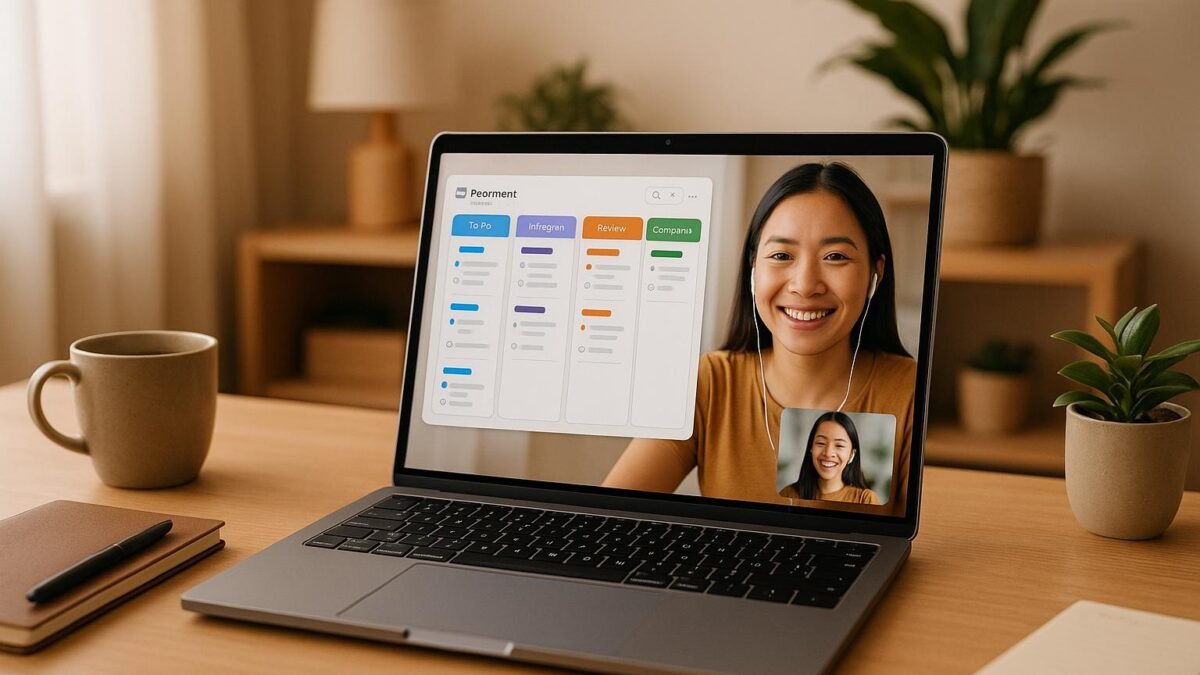Managing Filipino virtual assistants effectively requires the right tools for task organisation, communication, productivity tracking, and payroll management. Here’s a quick summary:
- Project Management: Trello (simple tasks), Asana (detailed workflows), Monday.com (custom workflows).
- Time Tracking: Time Doctor (performance insights), Hubstaff (team productivity), Toggl Track (flexible tracking).
- Communication: Slack (team messaging), Zoom (video calls), Google Workspace (document collaboration).
- Financial/HR Tools: QuickBooks (accounting), Xero (payroll), Outsource My Business (HR compliance).
Quick Comparison
| Category | Tools | Starting Price (AUD) | Best For |
|---|---|---|---|
| Project Management | Trello | $5/user/month | Small teams, simple tasks |
| Asana | $10.99/user/month | Complex workflows | |
| Monday.com | $8/user/month | Custom workflows | |
| Time Tracking | Time Doctor | $6.70/user/month | Performance insights |
| Hubstaff | $4/user/month | Team productivity & payroll | |
| Toggl Track | $9/user/month | Simple, flexible tracking | |
| Communication | Slack | $11.70/user/month | Team messaging |
| Zoom | $17.80/user/month | Video calls | |
| Google Workspace | $8/user/month | Document collaboration | |
| Financial/HR Tools | QuickBooks | Varies | Accounting |
| Xero | $35/month | Payroll | |
| Outsource My Business | Custom pricing | HR compliance |
Tip: Combine these tools to streamline workflows, improve communication, and simplify payroll management. This approach helps Australian businesses manage Filipino virtual assistants efficiently while addressing time zone and administrative challenges.
Top Tools To Use While Working With Your Virtual Assistant
Project Management Tools
Managing projects effectively is essential, especially when working with teams across different time zones and backgrounds. With the right tools, Australian business owners can streamline task delegation, monitor progress, and maintain seamless communication with their Filipino virtual assistants. These platforms help create an organised workflow, ensuring everyone stays on the same page.
Trello
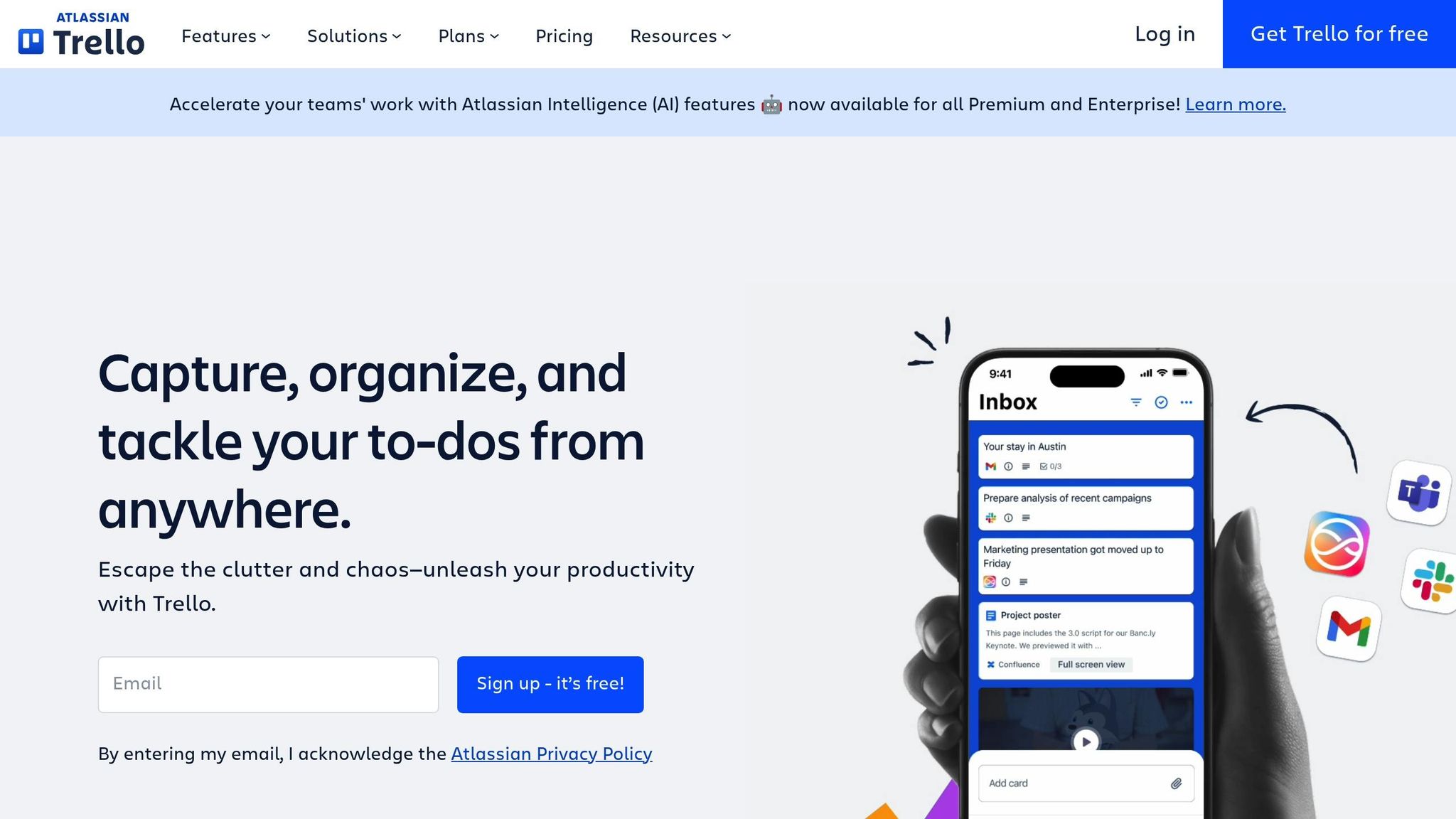
Trello’s visual format is a great fit for Filipino virtual assistants who value clarity. Using Kanban boards, tasks move through stages like "To Do", "In Progress", and "Completed", reducing confusion about priorities and progress.
R.J. Weiss, founder of The Ways to Wealth, highlights why Trello stands out:
"What we love the most about Trello is the simplicity… Trello does the opposite; it helps us reduce the complexity of our systems and processes, keeping our workflow visual and streamlined while still providing enough features to get the job done."
Trello’s drag-and-drop interface makes it easy to reassign or update tasks. Each card can include attachments, checklists, and deadlines, ensuring that your assistant knows exactly what’s needed. Plus, with over 200 integrations, Trello can adapt as your business grows.
Asana

If you’re managing more intricate projects with multiple deadlines, Asana might be the better choice. It offers various views – list, board, timeline, and calendar – catering to different preferences. Features like custom fields, tags, and task dependencies allow for detailed project planning, while automated workflows notify your assistant when tasks are ready for their input. The mobile app is especially handy for bridging time zone differences between Australia and the Philippines.
Asana also provides robust reporting tools, helping you track productivity and plan future projects. Its free plan supports up to 15 users, making it a good starting point for smaller teams. On G2, Asana scores 4.3 out of 5, with users praising its automation and collaboration tools, though some mention a learning curve.
Monday.com
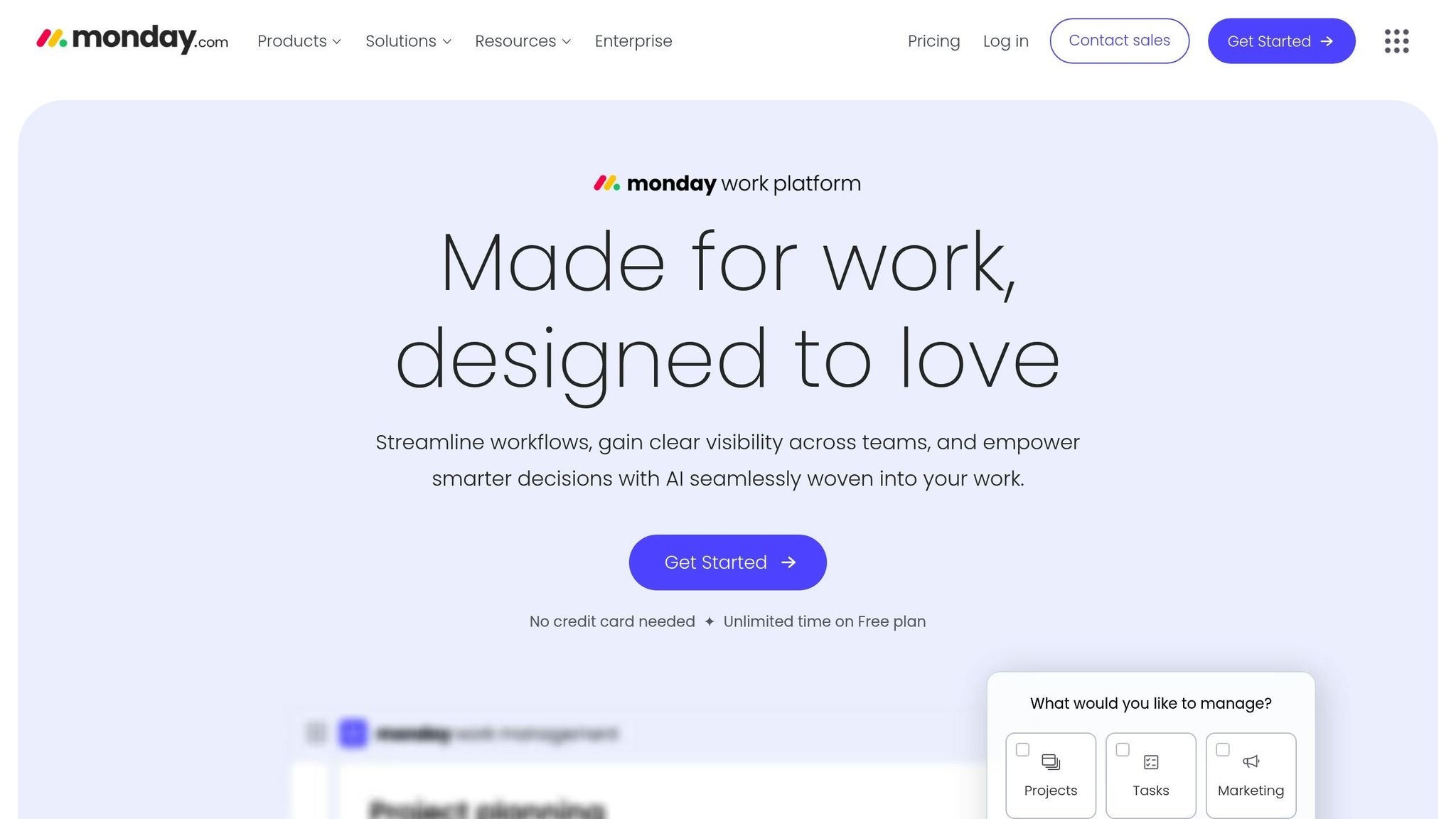
Monday.com shines with its customisable workflows and powerful automation. Its visual interface, complete with colour-coded elements and progress bars, simplifies project updates and reduces the need for constant check-ins. This ties back to managing complexity in remote teams, as discussed earlier. The platform also supports over 72 integrations and offers multiple views, including Kanban, timeline, calendar, and table. Built-in communication tools keep discussions organised and reduce email overload.
Monday.com receives high praise from users, scoring 4.7 out of 5 on G2, 4.6 on Capterra, and 4.6 on GetApp.
Comparison Table
| Feature | Trello | Asana | Monday.com |
|---|---|---|---|
| Ease of Use | Very easy | Moderate | Easy |
| Best For | Small teams & simple tasks | Mid-sized teams & complex projects | Teams needing visual flexibility |
| Collaboration | Good | Excellent | Excellent |
| Automation | Basic (Butler) | Basic to advanced | Advanced, easy setup |
| Free Plan | Unlimited users, limited boards | Up to 15 users | 2 users, limited features |
| Starting Price | $5/user/month | $10.99/user/month | $8/user/month |
| G2 Rating | 4.4/5 | 4.3/5 | 4.7/5 |
| Integrations | 200+ | Many | 72+ |
| Offline Access | Limited | Limited | Full |
Prices in AUD.
Choosing the right tool depends on the size of your team and the complexity of your projects. Trello is ideal for straightforward tasks, Asana is better for handling complex workflows, and Monday.com offers customisation and flexibility for teams needing adaptable solutions.
Time Tracking and Productivity Tools
Effective time tracking is a cornerstone of managing Filipino virtual assistants working across different time zones. These tools not only help with accountability and fair billing but also provide valuable insights into work patterns. The trick is to pick a solution that promotes trust rather than creating a sense of surveillance.
Time Doctor
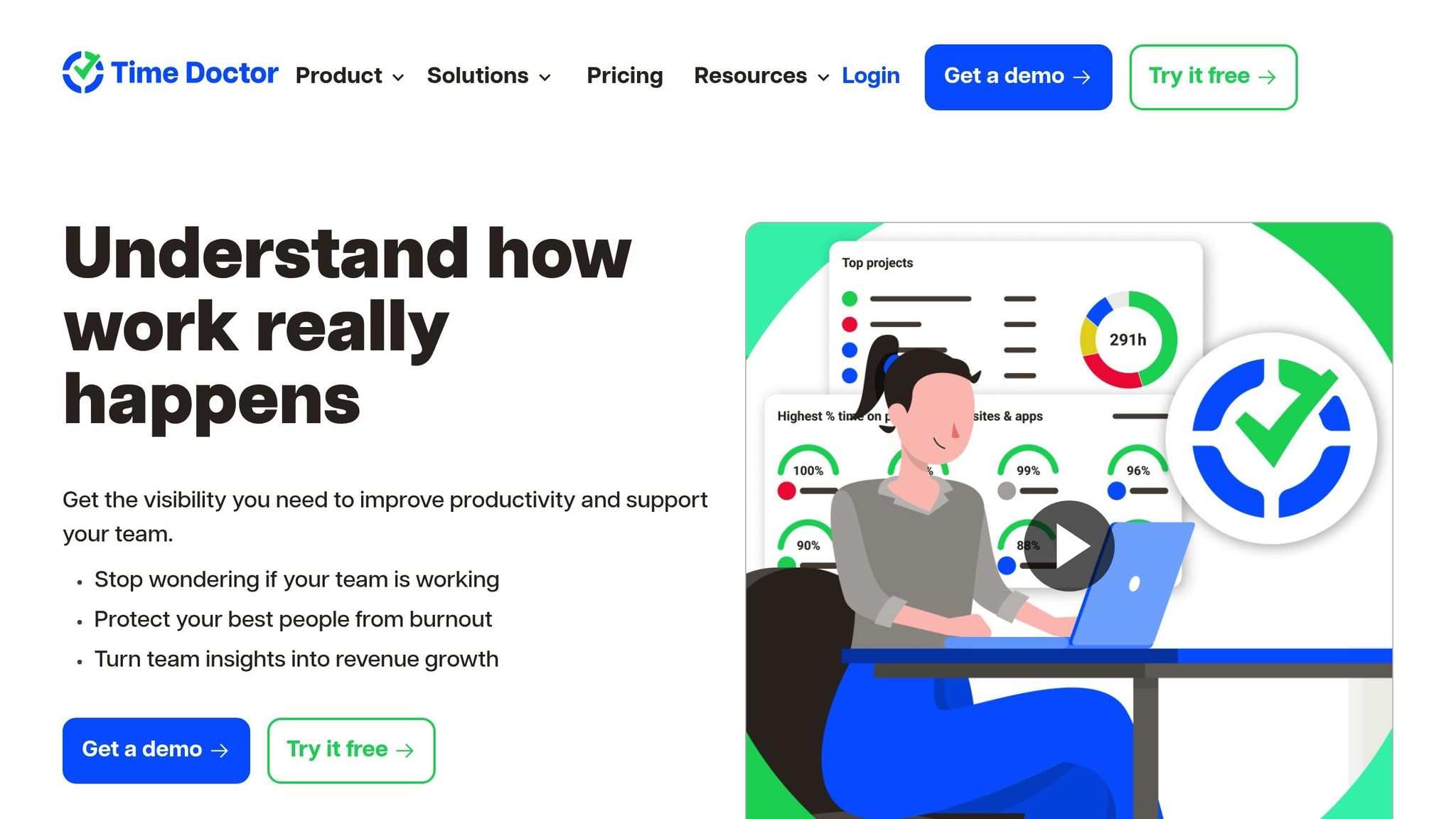
Time Doctor is designed to track productivity by logging work hours, taking periodic screenshots, and monitoring app usage. It offers over 60 integrations, making it easy to connect with your existing tools.
Monica A, a Team Lead, highlights its usefulness:
"Easy to use, can measure productivity with the team with nice features that are helpful like pulling reports."
Its reporting features are particularly helpful for spotting tasks that take longer than expected and identifying productivity trends, which can guide workflow adjustments and deadline setting. However, there are occasional syncing issues when switching devices, as noted by Phat P, a Managing Director and MERN Stack Developer:
"Sometimes the syncing of time can be incorrect when switching between multiple computers, which can cause loss of working time."
Pricing: Starts at AU$6.70 per user per month (Basic plan) and goes up to AU$16.70 per user per month for the Premium plan.
Hubstaff
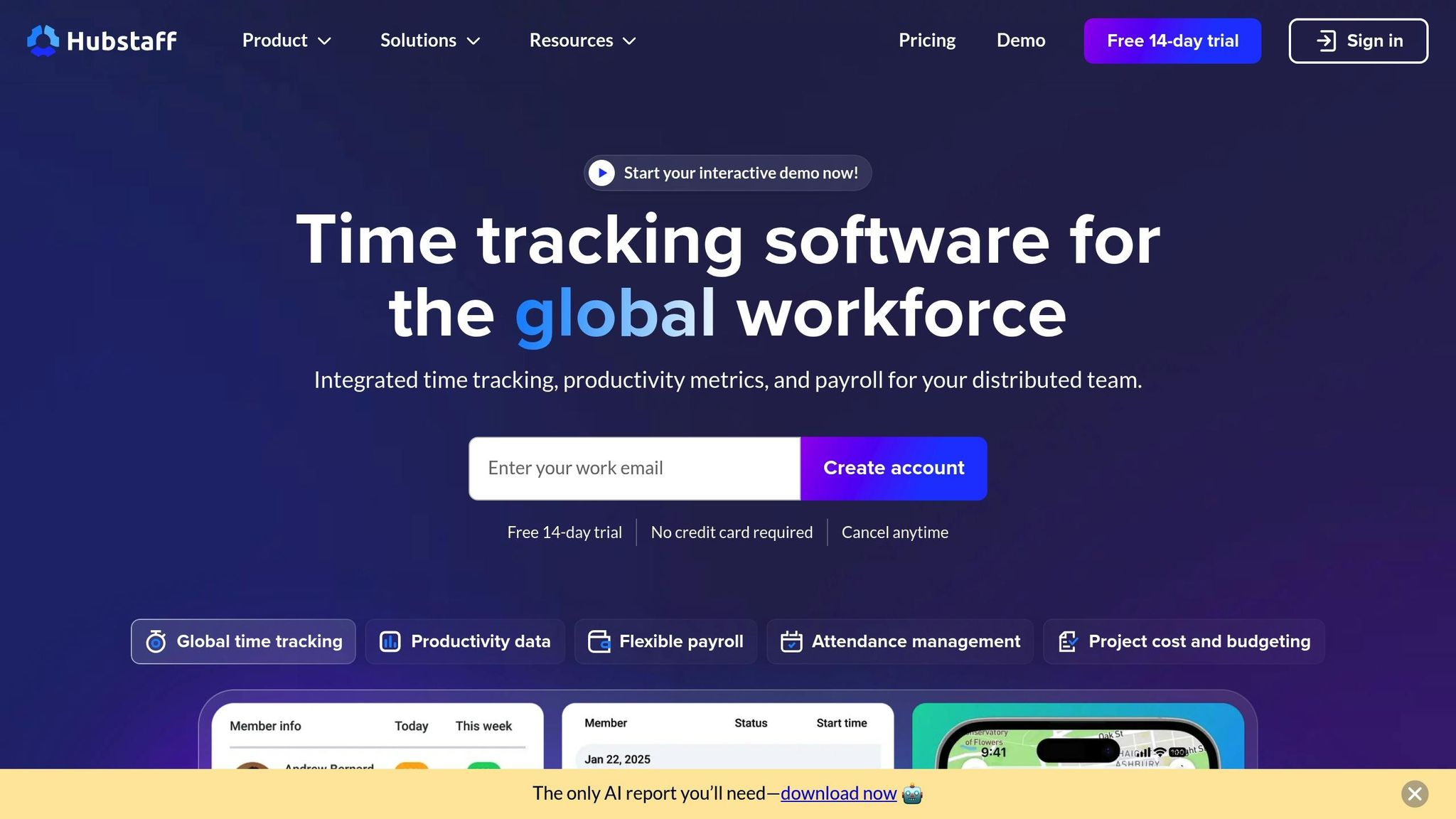
Hubstaff focuses on team productivity and automation rather than individual monitoring. It combines time tracking with payroll features, making it easier to manage payments for your virtual assistants. It also includes GPS tracking for mobile work and monitors keyboard and mouse activity.
Automation is a strong point here. Hubstaff can track time automatically when certain apps open, generate timesheets, and handle payments based on logged hours. Its mobile, desktop, and web apps are well-regarded, though geofencing has its limitations, as one reviewer pointed out:
"Doesn’t stop employees from clocking in outside job sites."
Pricing: Starts at AU$4 per seat per month (Starter plan) and goes up to AU$25 per seat per month for the Enterprise version. It also offers over 30 integrations with popular business tools.
Toggl Track
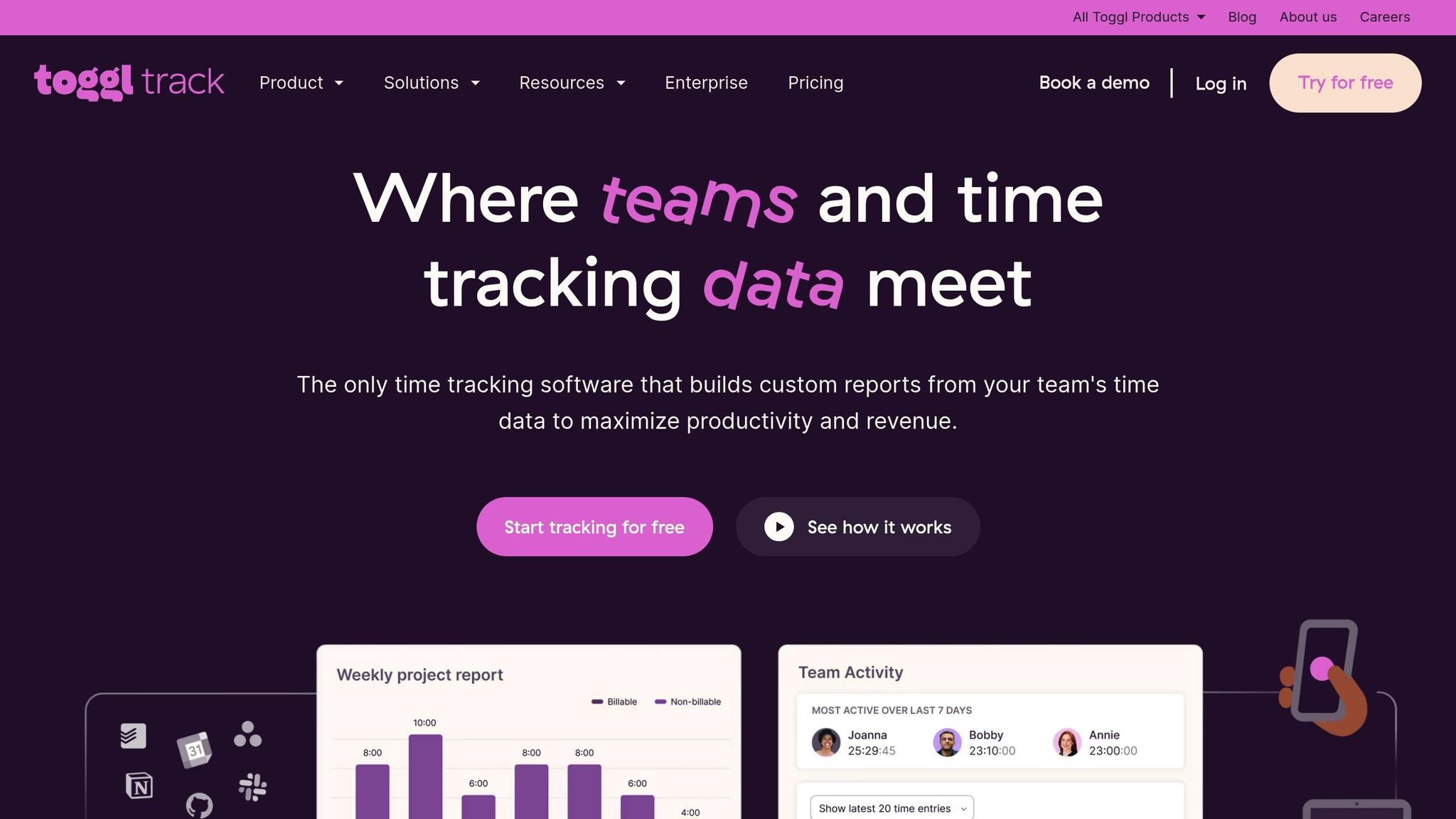
Toggl Track is all about simplicity and flexibility. Its clean interface makes it easy for virtual assistants to log their time without the hassle of complicated monitoring features.
Karen R, a Customer Service and Accounts Receivable professional, praises its design:
"Perfect, well-thought out interface, works great every time, great support, and terrific reporting."
Despite its straightforward approach, Toggl Track provides solid reporting tools. You can generate reports by project, client, or time period, making it easy to track productivity and billing accuracy. However, the lack of a pause feature can be inconvenient, as Jerry L, a Co-founder, noted:
"One annoying feature is that you can’t pause sessions; you have to stop it, and create a new one. You end up with a couple of 5 second sessions."
Pricing: Starts at AU$9 per user per month (Starter plan) and goes up to AU$18 per user per month for Premium features.
Comparison Table
| Feature | Time Doctor | Hubstaff | Toggl Track |
|---|---|---|---|
| Best For | Individual performance analysis | Team productivity & payroll | Simple, flexible tracking |
| Key Strength | Monitoring & screenshots | Automation & payroll integration | User-friendly interface |
| Integrations | 60+ tools | 30+ tools | Standard business tools |
| Starting Price | AU$6.70/user/month | AU$4/user/month | AU$9/user/month |
| Premium Price | AU$16.70/user/month | AU$25/user/month | AU$18/user/month |
| G2 Rating | 4.4/5 | 4.4/5 | 4.6/5 |
| Capterra Rating | 4.5/5 | 4.6/5 | 4.7/5 |
| Activity Monitoring | Screenshots & app usage | Keyboard/mouse activity | Basic time logging |
| Payroll Integration | Limited | Built-in | Third-party required |
All prices are in Australian dollars (AUD).
sbb-itb-cf56daf
Communication and Collaboration Platforms
Managing Filipino virtual assistants across time zones requires clear and effective communication. The right tools can help bridge these gaps, ensuring smooth collaboration no matter where team members are located. Below, we explore some of the most reliable platforms for messaging, video calls, and document sharing.
Slack
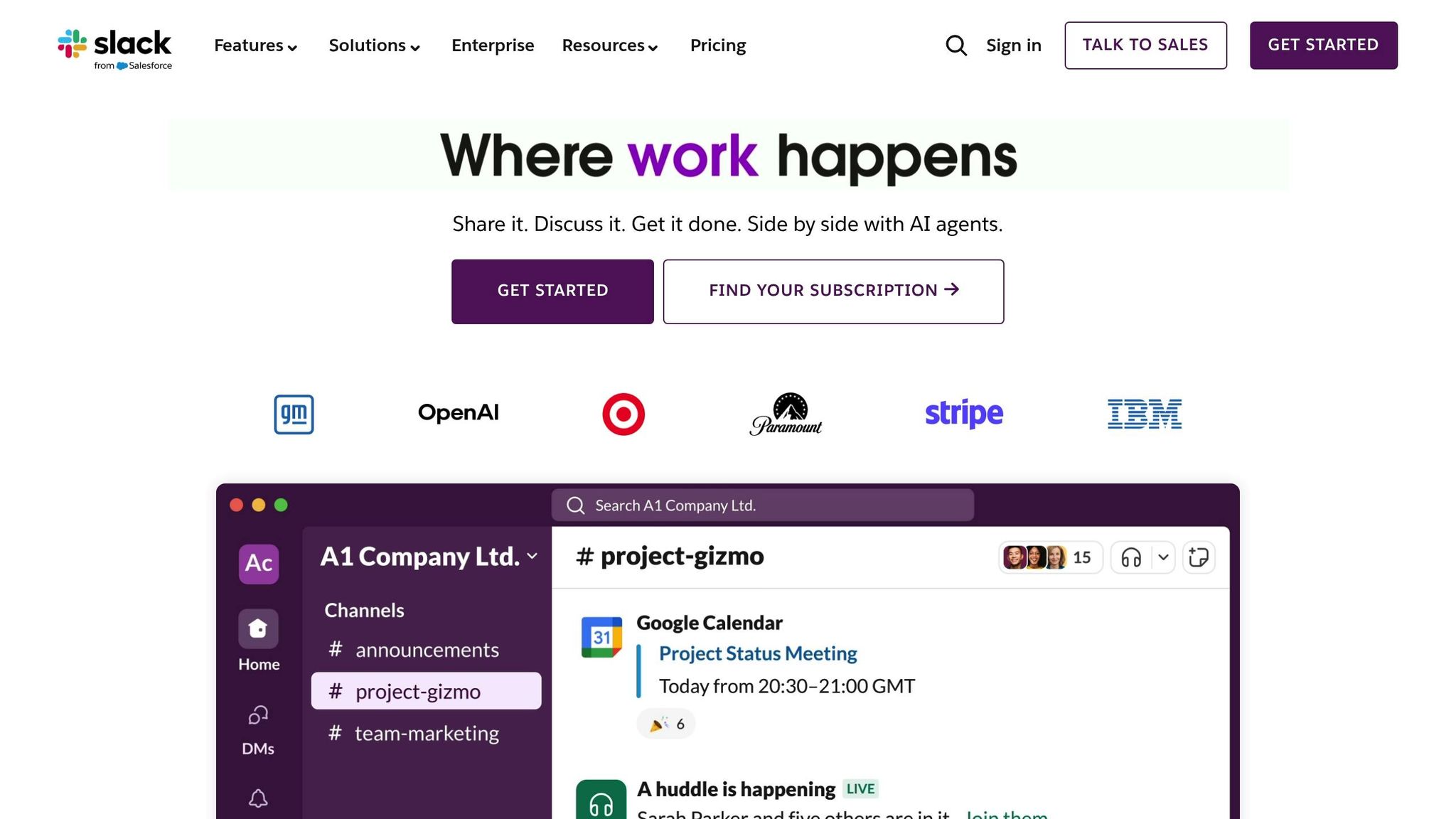
Slack has become a staple for team communication, thanks to its organised channels and direct messaging features. With 32.3 million daily active users, it’s widely recognised for enabling persistent team chats and seamless workflow integration. Its app directory connects with tools like project management software and time trackers, allowing Filipino virtual assistants to stay updated, share files, and manage tasks without switching platforms.
That said, Slack isn’t without its challenges. Users often feel overwhelmed by too many notifications from multiple channels. Plus, the free plan has limited features, and newcomers may face a learning curve when adapting to its channel-based system.
Pricing: AU$11.70 per user per month for the Pro plan (or AU$5.85 per user per month for the first three months). This includes unlimited message history, app integrations, group audio/video meetings, and document collaboration.
G2 Rating: 4.5 out of 5 stars from 34,154 reviews.
Zoom
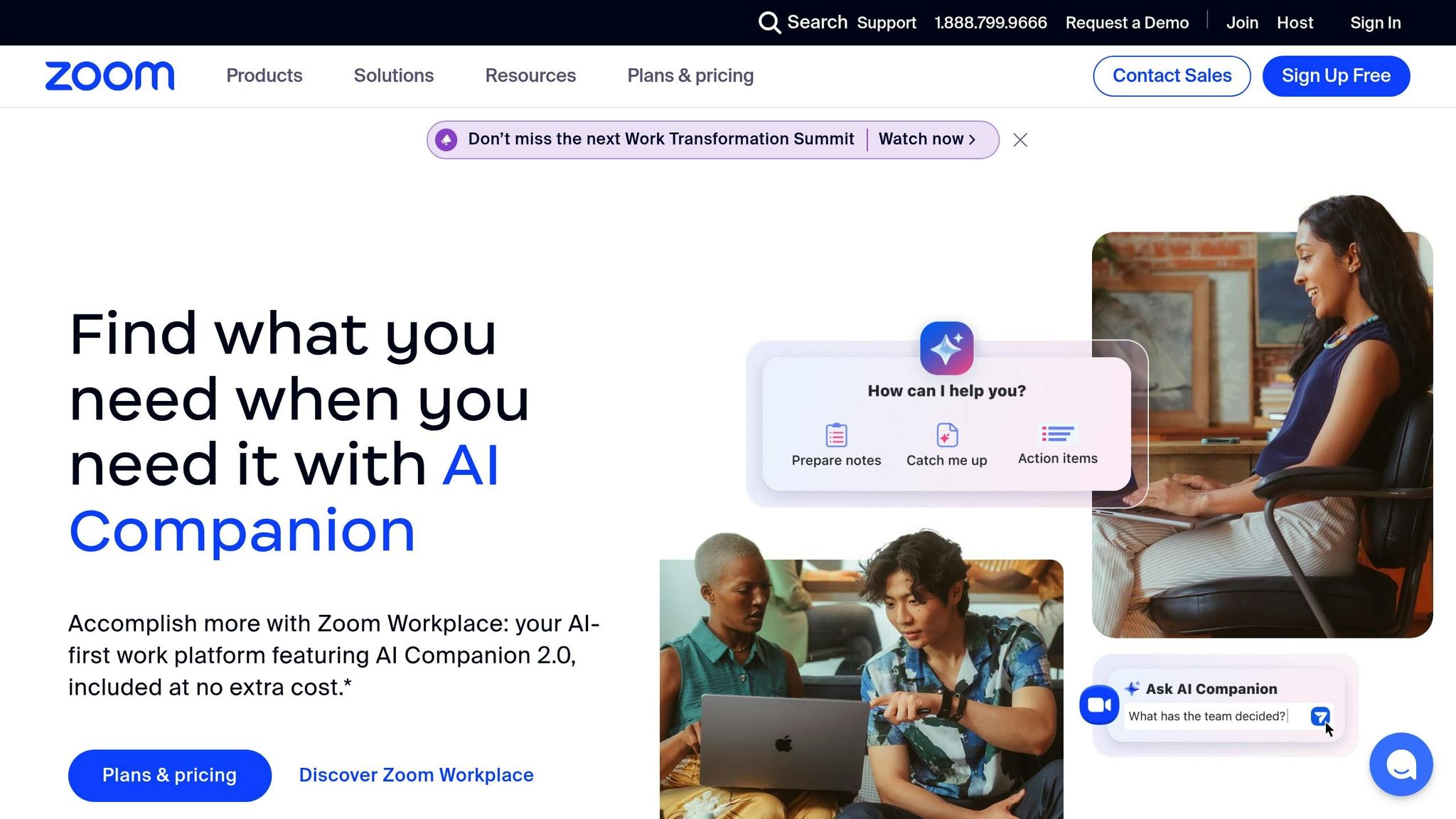
Zoom has grown from a simple video conferencing app to a robust collaboration platform. With 300 million daily active users, it’s a great choice for onboarding Filipino virtual assistants and hosting regular team meetings.
It offers high-quality video and audio, making interactions across time zones feel more personal. Features like screen sharing, breakout rooms, and cloud recording enhance training sessions and group work. Zoom’s straightforward setup ensures meetings start without a hitch.
Additional tools like whiteboards and annotations allow for real-time collaboration during meetings. However, some users report occasional connectivity issues and difficulties integrating Zoom with other business tools.
Pricing: AU$17.80 per user per month (billed annually) or AU$22.70 per user per month (billed monthly). This plan supports meetings up to 30 hours, 100 participants, 10GB cloud storage, and AI Companion features.
G2 Rating: 4.5 out of 5 stars from 355 reviews.
Google Workspace
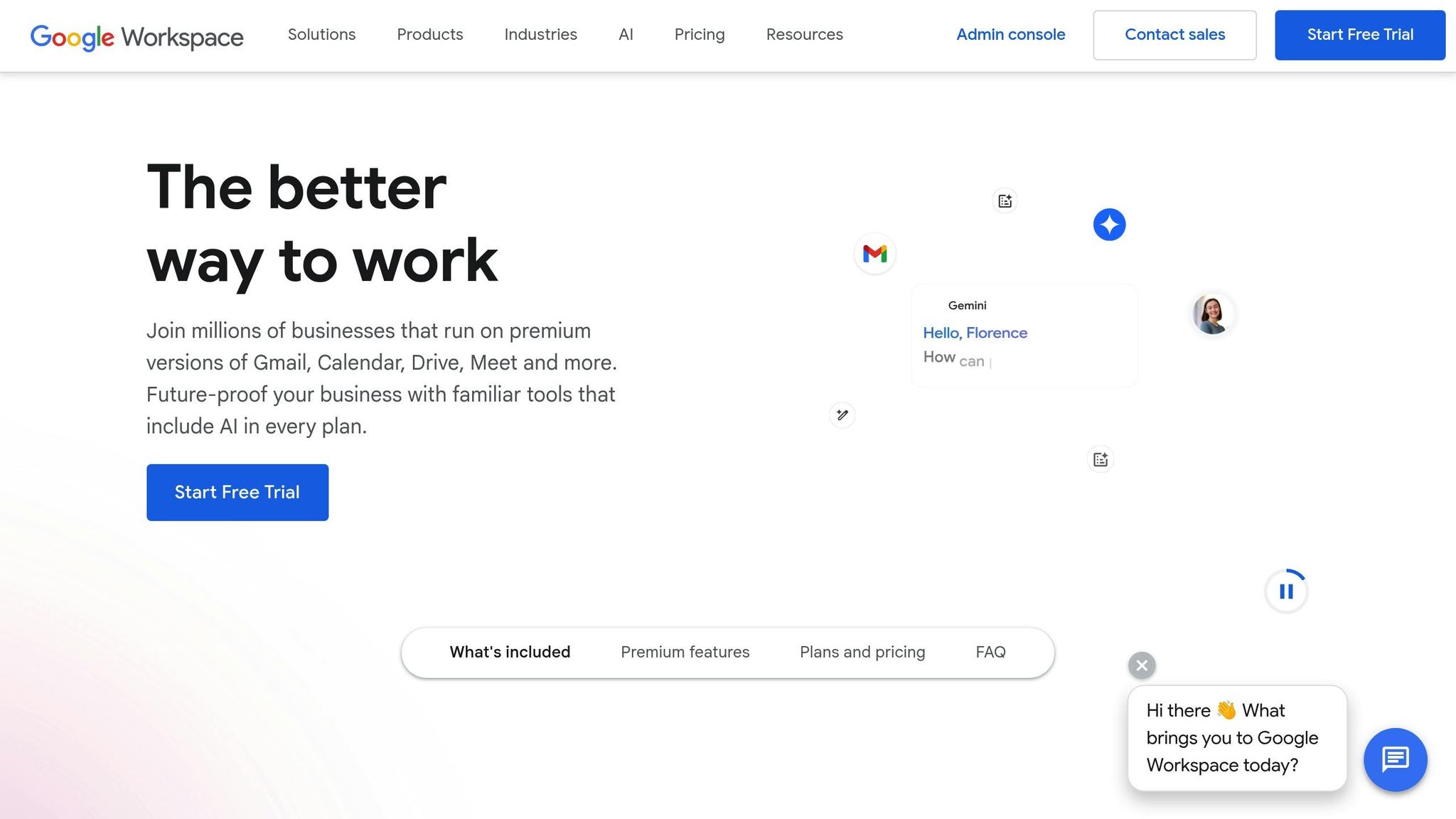
Google Workspace offers a comprehensive suite of tools, combining email, document sharing, and collaborative editing in one platform. Starting at AU$8 per user per month, it’s a budget-friendly option for teams needing versatile communication and productivity tools.
The platform integrates Gmail, Google Meet, Google Chat, and Google Drive, creating a unified workspace. This setup allows for real-time document editing and smooth collaboration. Google Meet, a key feature of the suite, is highly rated with 4.6 out of 5 stars on G2, based on 2,801 reviews.
One drawback, however, is the limited offline functionality, which could be a concern for teams needing access without internet.
Pricing: Starting at AU$8 per user per month with annual billing.
G2 Rating: 4.6 out of 5 stars from 2,801 reviews.
Comparison Table
| Feature | Slack | Zoom | Google Workspace |
|---|---|---|---|
| Primary Function | Team Messaging | Video Conferencing | Cloud-Based Productivity |
| Daily Active Users | 32.3 million | 300 million | Not specified |
| Best For | Project-based communication | Live interactions & meetings | Document collaboration |
| Key Strength | Workflow automation & integrations | High-quality video & audio | Google ecosystem integration |
| Starting Price | AU$11.70/user/month | AU$17.80/user/month | AU$8/user/month |
| G2 Rating | 4.5/5 (34,154 reviews) | 4.5/5 (355 reviews) | 4.6/5 (2,801 reviews) |
| File Sharing | Built-in with integrations | Cloud recording & storage | Google Drive integration |
| Real-time Collaboration | Channel discussions | Whiteboard & annotation | Live document editing |
| Main Limitation | Notification overload | Connectivity issues | Minimal offline support |
Financial and HR Management Tools
Handling payroll for Filipino virtual assistants requires tools that simplify international payments, manage tax requirements, and handle currency conversions. These tools not only complement project and communication platforms but also streamline financial and HR processes for Filipino VAs.
QuickBooks
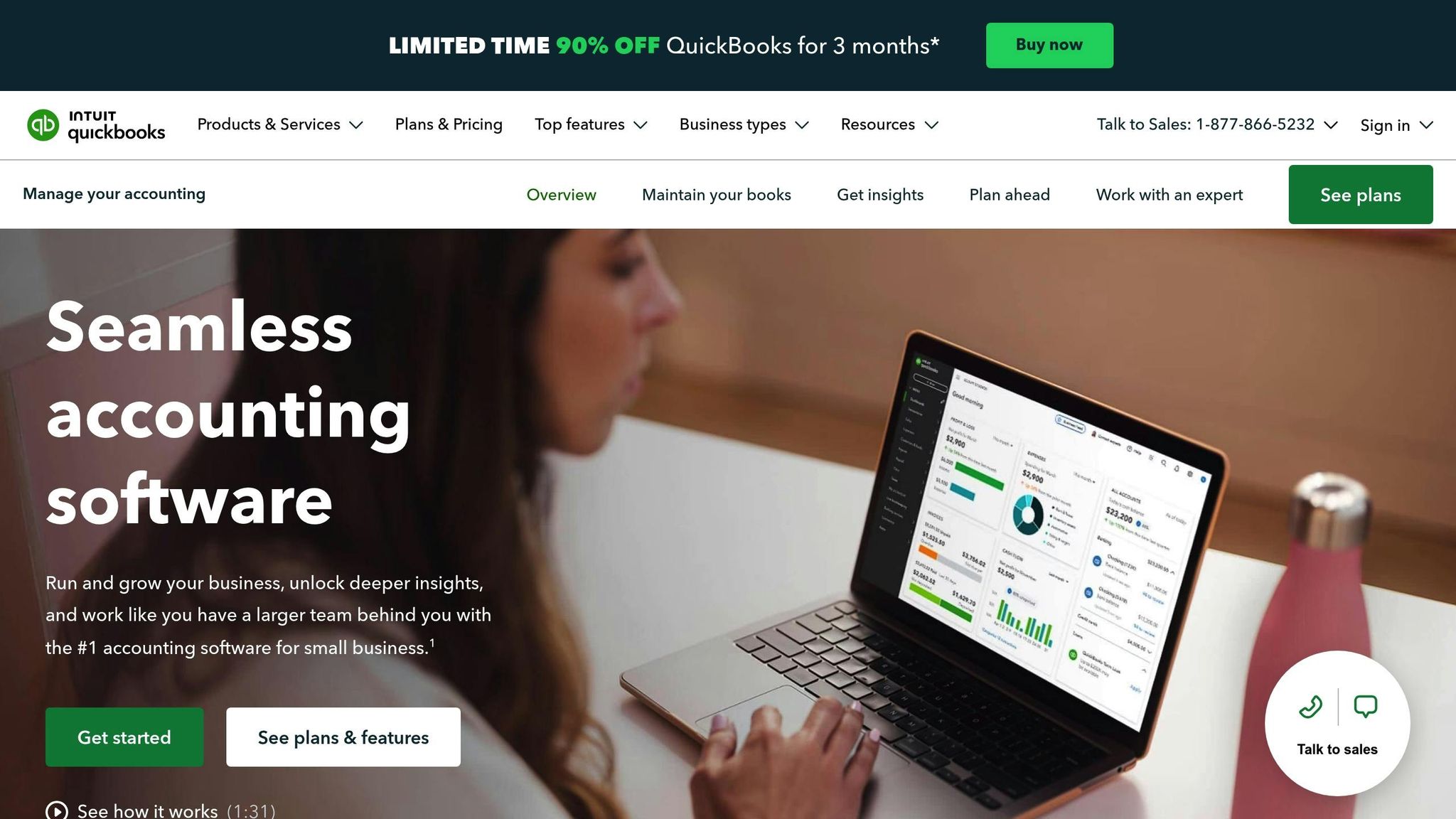
QuickBooks is a trusted accounting platform, especially for small and medium-sized businesses, offering a range of financial management features that work well for teams with international members. It covers invoicing, expense tracking, and financial reporting, while also making expense categorisation and multi-currency payment tracking straightforward.
For businesses paying Filipino virtual assistants, QuickBooks automatically converts AUD to PHP using current exchange rates and integrates seamlessly with popular payment platforms like PayPal and Wise. This ensures smooth transaction recording. Although QuickBooks excels in generating detailed reports – such as summaries of international payments and contractor expenses for tax purposes – it doesn’t directly process payments to the Philippines. You’ll still need a separate payment platform for transfers. That said, it remains a solid choice for businesses managing international transactions.
Xero

Xero, an Australian-developed accounting platform, is particularly well-suited for businesses managing Filipino virtual assistants. It integrates with Australian banks, making AUD-based transactions and international payment tracking straightforward.
Its payroll features support multiple currencies and adapt to different payment structures. The bank feed functionality is especially handy, automatically importing transactions from major Australian banks. One standout feature is Xero’s real-time collaboration capability, which allows Filipino virtual assistants to access financial documents and reports through controlled user permissions. Additionally, the platform generates detailed reports to assist with tax compliance and planning.
"A survey by the Philippine Institute of Certified Public Accountants (PICPA) revealed that 78% of companies using cloud-based payroll systems reduced compliance errors by over 40%".
Xero’s cloud accounting packages, which include payroll features, range from AU$35 to AU$115 per month, with discounts available for annual subscriptions.
Outsource My Business for HR and Payroll
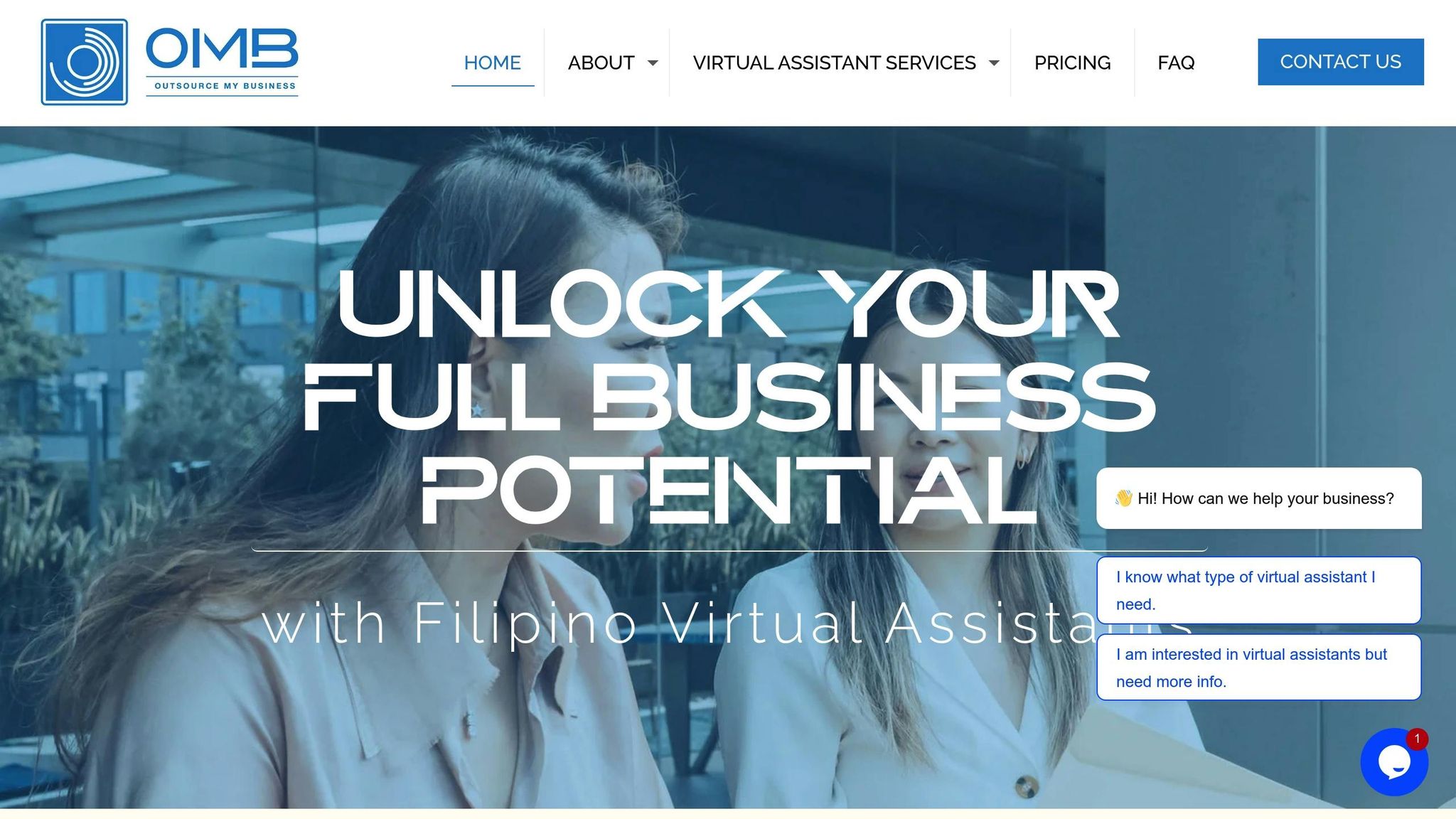
For businesses needing expertise in Philippine labour laws and compliance, Outsource My Business provides tailored HR and payroll management services designed for Australian companies working with Filipino virtual assistants.
The service covers recruitment, onboarding, payroll processing, tax compliance, and benefits administration. This eliminates the challenges of navigating Philippine employment regulations, such as SSS, PhilHealth, and PAG-IBIG contributions. With over 70% of compliance penalties in Southeast Asia linked to administrative oversights, having expert support is essential.
Outsource My Business manages every stage of the employee lifecycle – from drafting contracts to performance management and payroll processing. This allows Australian business owners to focus on their core operations while ensuring Filipino team members are paid accurately and on time, with proper benefits.
The Philippines is ranked as the 2nd most complex country in East and Southeast Asia for payroll processing, making expert management invaluable. Key benefits of using Outsource My Business include:
- Full payroll processing and tax compliance
- Recruitment and onboarding support
- Administration of benefits, including health insurance and government contributions
- Regular performance management and team support
- Risk mitigation through expert compliance oversight
Given that manual entry errors account for over 60% of compliance failures – causing delayed payments, incorrect filings, and employee disputes – Outsource My Business offers peace of mind. Combining financial tools like QuickBooks or Xero with their HR services creates a seamless, end-to-end solution for managing Filipino virtual assistants effectively and efficiently.
Conclusion
By combining project management, time tracking, communication, and financial/HR tools, Australian businesses can effectively tackle the challenges of managing remote teams, particularly Filipino virtual assistants. Platforms like Trello, Asana, and Monday.com, when used alongside communication tools such as Slack and Zoom, help establish structured workflows. These tools bridge time zone differences and cultural nuances, leading to greater productivity and improved project outcomes.
Time tracking tools like Time Doctor and Toggl Track add a layer of transparency that fosters trust between Australian managers and their Filipino VAs. They also ensure payroll accuracy, eliminating uncertainties and setting clear expectations – an essential factor when managing teams across borders.
Financial and HR management becomes more efficient with tools tailored to AUD currency and compliance needs. Accounting software like QuickBooks and Xero simplifies international payments, while services like Outsource My Business handle Philippine labour laws, tax compliance, and employee benefits. This allows Australian business owners to focus on their core operations rather than administrative burdens. Together, these tools streamline cross-border operations, making remote management more manageable.
For Australian SMEs looking to scale, integrating these tools with expert outsourcing support offers a significant edge. Outsource My Business takes care of recruitment, onboarding, and ongoing HR management, giving businesses access to skilled Filipino talent without the headache of compliance issues. This seamless approach not only ensures operational efficiency but also sets businesses up for sustained success in a competitive global market.
Ultimately, successful remote team management hinges on tools that integrate smoothly with existing systems and enable real-time collaboration. When paired with expert guidance on recruitment and compliance, these resources turn obstacles into opportunities, driving productivity and fostering long-term growth.
FAQs
What should you consider when choosing project management tools for Filipino virtual assistants?
When picking project management tools for Filipino virtual assistants, it’s essential to prioritise platforms that enable smooth communication and teamwork. Look for features like team messaging, file sharing, and task tracking to help manage remote teams effectively.
Opt for tools that are easy to use and adaptable, so you can adjust workflows to fit your business requirements. Additionally, choose software that’s simple to set up, ensuring a hassle-free onboarding process and straightforward usage for your virtual assistants. These factors can improve productivity and maintain clear communication within your remote team.
How can time tracking tools like Time Doctor and Hubstaff boost productivity without making employees feel micromanaged?
Time tracking tools like Time Doctor and Hubstaff are designed to boost productivity by focusing on meaningful metrics like task completion and active work hours, rather than relying on invasive monitoring techniques. They also give employees access to their own performance data, enabling them to monitor progress and set personal goals.
By emphasising transparency and encouraging self-awareness, these tools create an environment of trust and accountability. Instead of feeling micromanaged, team members are empowered to take ownership of their work. This not only enhances efficiency but also nurtures a positive and cooperative workplace culture.
What are the advantages of using financial and HR tools tailored for managing Filipino virtual assistants?
Using financial and HR tools tailored for managing Filipino virtual assistants can make a world of difference. These tools help simplify operations by automating repetitive tasks like payroll, bookkeeping, and performance tracking. The result? Less time spent on admin work and fewer headaches from manual processes.
They also bring precision to financial and HR tasks, reducing errors and ensuring compliance with local rules and regulations. On top of that, they improve communication and feedback systems, creating a more connected and motivated remote team.
With these tools in place, businesses can work smarter, streamline workflows, and dedicate more energy to what truly matters – their core operations. All this while maintaining a smooth, professional partnership with their Filipino virtual assistants.

